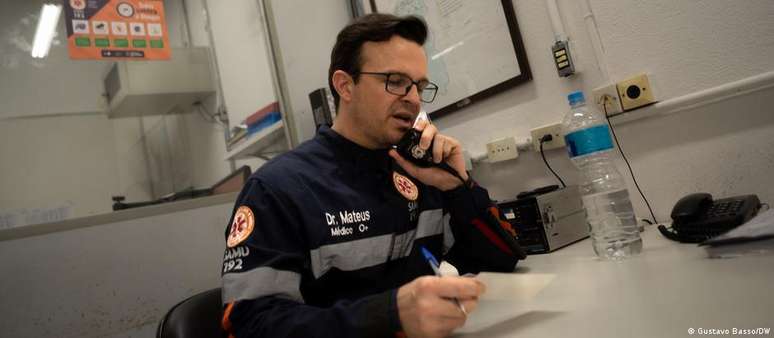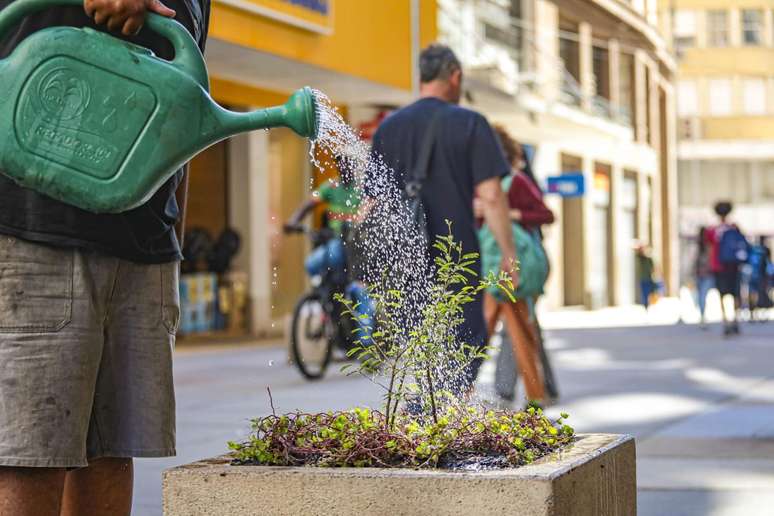The service reaches 93% of the country’s population thanks to the adaptation of the French model to the Brazilian reality. Relieved, despite the situation, the pensioner José Roberto Dias, 65 years old, sees his niece embark almost unconscious on board a Advanced Support (USA). by Samu, assisted by a team made up of a doctor, nurse and technician-driver. They were the ones who removed her with weak vital signs from the second floor of her house where she lives with her aunt and uncle, in the central region of Santo André.
“Every profession is honorable, but the work of first responders is very noble, they are able to provide support to patients and families, often in the most vulnerable moments,” says Dias.
The pensioner’s comment is emblematic of the population’s perception of Samu, as the mobile emergency service is commonly known. A survey carried out by Samu de São Paulo revealed that 90% of residents perceive the service positively, which celebrates its 20th anniversary this Saturday (27/04).
“I think the best part of the job is being able to comfort; saving a life is sometimes difficult, success doesn’t always come, but comforting a relative, a family, is the main thing,” says Francis Fuji, 45, 16 of which are dedicated to pre-hospital care. “No matter how bad the outcome was, the family is grateful because we comforted, welcomed and felt love in what we did.”
Birth
Samu was officially born on April 27, 2004, when then President Luiz Inácio Lula da Silva signed Decree 5,055, which established the Mobile Emergency Service in municipalities and regions throughout the country. To activate the service throughout the national territory, the number 192 was established.
The decree universalizes the service that had already been tested since 2003, after the publication, the previous year, of ministerial decree 2.048, which determines rules of intervention, such as equipment and protocols to follow: decisions which, for the “parents” of the Samu , were not trivial at the time.
“What equipment will we put in the ambulance? What drugs will the backpacks contain? What will we carry in a nurse’s backpack, in a doctor’s backpack?”, exemplifies the coordinator of Samu in São Paulo, Laelcio Ramos.
After two decades, according to the Ministry of Health, Samu reaches 187.2 million people in 3,900 municipalities, or approximately 92% of the population – thanks to some modifications made to the French model which served as a reference in the implementation of the service, such as , for example, the use of motorcycles in service from 2008 onwards.
In Sergipe, 85% of calls are made with so-called “motorcycles”, with a response time of up to ten minutes from one of 40 bases, according to the superintendent of Samu in the state, Denison Pereira. “In 1998 there were two fire ambulances in the whole state; today they have five, while Samu uses 43 Basic Support Units (USB) and 16 USA, as well as four motorcycles per base,” adds the nurse.
“Ambulanchas” are used in regions such as the Amazon and parts of the Rio de Janeiro coast to serve riverine and coastal communities. In the capital of the Amazon, four speedboats support rural communities located up to 100 kilometers from the city along the Rio Negro and Amazonas rivers. “In this latest drought we had to deal with dozens of isolated communities, making it impossible to reach them by water,” says Ellen Assunção, nursing coordinator in Samu de Manaus.
“During this time, for example, we took a man who was the victim of a heart attack, who was saved only because we were able to borrow a helicopter to reach him. Even by boat, the journey can take four hours, making assistance difficult,” he says .
Pandemic
But no movement has been more challenging, Assunção says, than transfers of Covid-19 patients from overcrowded, oxygen-starved hospitals from Manaus to across Brazil. As the health system in the Amazon capital collapsed, authorities transferred 248 patients to cities such as Recife, Goiânia and even Uberaba.
“There was a lot of tension because we were wearing all that personal protective equipment, with suits, masks, glasses, visors. Moving inside the plane was bad, getting close to the patient and carrying out the procedures with those clothes, in that confined space, it was a challenge,” recalls Assunção.
On that occasion, the federal government paid for the transport of patients, a financial contribution common to Samu, which annually has around R$ 1.94 billion in federal funds for the distribution of vehicles throughout the country (3,847 cars, 256 motorcycles and 13 motorboats, as well as 21 aeromedical rescue teams).
The cost of the interventions is divided between the Municipality, the State and the Union. An expensive operation, but which positions the service as the jewel in the crown and excellence within the Unified Health System (SUS).
For Ramos, medical coordinator of the Samu of São Paulo, this is a huge merit for the SUS, which reveals the efficiency of a public service that the private sector, in his opinion, cannot replace. “Equivalent private services can’t handle it, they don’t have response times, they’re not ready, they don’t have the agility of Samu. All this is very expensive, it’s not profitable for the private sector,” he says.
Threats
The first doctor on board a forward support ambulance throughout the country, way back in 1996, even before the official creation of Samu, Ramos followed with a privileged eye the progress and results of the service, as well as the threats it faces and has faced in the richest city in the country.
Due to the existence of a rescue service linked to the fire brigade, the Emergency and Emergency Rescue and Attention Group (Grau), the São Paulo government never paid its share of Samu’s costs. The result is service delivery that is lower than recommended.
In São Paulo, the approximately 11.5 million inhabitants have 122 ambulances – of which 15 are mobile intensive care units – which guarantees an average of one for every 94 thousand inhabitants. The average falls within the coefficient of one per 100,000 people proposed by the World Health Organization (WHO), but is half that supported by the US National Institute of Health for underdeveloped or developing countries. This contingent responds to approximately 390,000 incidents per year, more than 900 per day.
In Manaus, which has 2 million inhabitants, the 45 ambulances, 16 motorcycles and two ambulances, as well as two support vehicles, carried out 55.5 thousand services in 2023. With one ambulance for every 44 thousand inhabitants, the challenges in the capital of Amazonia are the distances to overcome.
A problem that seemed overcome in São Paulo, until in 2019 the municipality, under the direction of Bruno Covas, decided to close 31 service points scattered throughout the city, centralizing vehicles in hospitals, a decision that ended up affecting the patient care throughout the pandemic. To make matters worse, the federal government has not donated any ambulances to the Sao Paulo program for six years.
Among the problems faced by continuous management changes and the slow adoption of new procedures and technologies, professionals consider compliance with contracts with healthcare organizations (HOs) to be the most critical issue. More precarious hiring regimes and the use of lower quality materials are some of the consequences of these healthcare managers, they say.
As for care, emergency workers cite false information provided by patients to skip the waiting list as the main problem.
Source: Terra
Rose James is a Gossipify movie and series reviewer known for her in-depth analysis and unique perspective on the latest releases. With a background in film studies, she provides engaging and informative reviews, and keeps readers up to date with industry trends and emerging talents.







